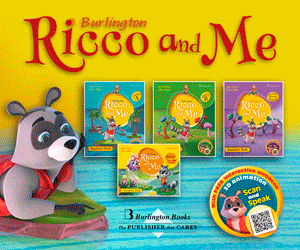In a study of the learning style of EFL students, Willing (1985) found four different learner types:
• Concrete learners - who prefer the use of games, audio-visuals and pair work.
• Analytical learners - who prefer structured study methods and texts, verbal-linguistic activities and self-correction.
• Communicative learners - who prefer the use of role plays, simulations and realia.
• Authority-oriented learners - who need detailed explanations, take copious notes and frequently use manipulatives.
In addition to the citing of these four types (J.C. Richards, 2004) there are these five ‘typical’ classroom types that I think teachers should be familiar with. Here they are with some suggestions on strategies to teach them.
1. The Learning Disabled Student
Poorly prepared since primary school with highly underdeveloped basic skills, this type of learner may even be deficient in their L1, or first language.
Teaching Strategy: A healthy dose of patience and adapting materials to their preferred learning characteristics are an absolute must.
2. The LEP Student
The Limited English Proficiency (LEP) learner has likely ‘progressed’ through earlier or lower levels solely by means of ‘piggy-backing’ off the abilities of a more proficient classmate or partner.
You, as the teacher, are now faced with a beginning level student in an intermediate or higher level class.
Teaching Strategy: Remedial work outside of class contact hours is going to be required here.
Reinforce work from lower levels through tutoring sessions, workshops or even extra classes outside the required norms to help this learner to catch up to where they should be.
3. The Teacher’s Pet
Their homework is always done, practice activities are nearly perfect, their notes immaculate and useful, their hands go up instantly in response to a question or activity.
The Teacher’s Pet is a teacher’s dream. Yes, they’re out there and the experience of teaching them is a truly memorable one.
Teaching Strategy: This is where having those prepared extra assignments and activities really pay off.
The Teacher’s Pet will finish the normally-provided exercises and activities fairly quickly and frequently well ahead of the other students.
So enjoy and whip those ‘extras’ on them –they’ll love you for it.
4. The ‘Unteachable’ Student
The bane of nearly all educators, they don’t even want to be present in class, let alone actually learn anything.
They’re often a constant distraction; inattentive, boisterous, disturbing all around them.
No books, participation or homework proceeds from anywhere in their direction.
Seemingly responding to neither carrot nor stick, the ‘unteachable’ student can make strong teachers weak and weak teachers ‘throw in the towel’ and become accountants.
Teaching Strategy: What’s needed here are some insights into the intrinsic and extrinsic motivations of these students.
Only then do you have a shot at motivating or interesting them in their didactic surroundings.
Find out - quickly - if there’s a way to reach them and act on it pronto or both of you will lose out.
5. The Extremist
Whether they’re Musical-Rhythmic, Visual-Spatial or another overly dominant Multiple Intelligence to the extreme, these learners could tax the patience of job itsself.
They might whistle, hum, chat, talk on their cell phone, scribble or doodle incessantly. Take note of it and learn to use it to draw them into the class and teach them.
Teaching Strategy: Don’t fight against them. Turn the tables on the situation and use their overwhelmingly dominant traits to teach them.
Even if they’re the only one with that particular learning characteristic in your class group - use it to your - and their advantage.
Get to know these learner types and familiarize yourself with techniques and didactics to manage them effectively in class before they get to you.
It will make your teaching experiences all the richer, more memorable and aid you in developing as a first-rate educator.
eltnews.gr
Τελευταία νέα
- EUROPALSO - Εγκύκλιος 27/06/2025: Απογραφή ΚΞΓ – Νέο Πρόγραμμα ΔΥΠΑ για εργαζόμενους και ανέργους – Εξετάσεις Ενηλίκων – WaterFun WaterPark – Βεβαιώσεις Σπουδών Society – Νέες Παροχές για ΚΞΓ ESB – Απενεργοποίηση κωδικών E-Europalso – Υποχρεώσεις Ιουλίου-Αυγούστου 2025
- EUROPALSO - ΦΟΡΟΛΟΓΙΚΕΣ ΥΠΟΧΡΕΩΣΕΙΣ ΙΟΥΛΙΟΣ & ΑΥΓΟΥΣΤΟΣ 2025
- EUROPALSO - Νέο Πρόγραμμα ΔΥΠΑ – Με επιδότηση €750
- EUROPALSO: Προσωπικός Αριθμός – Τι Είναι – Πως Εκδίδεται
- EUROPALSO - φορολογικές υποχρεώσεις ιούνιος 2025
- EUROPALSO: Απογραφή υφιστάμενων αδειών ΚΞΓ <75 σε πληροφοριακό σύστημα OpenBusiness έως 1/12/2025
- EUROPALSO Εγκύκλιος 13/06/2025: Απογραφή ΚΞΓ σε OpenBusiness – WaterFun WaterPark – Βεβαιώσεις σπουδών για ΚΞΓ Society – ESB Online Exams for Adults – Νέες Παροχές για ΚΞΓ ESB – Advisory Offices – Υποχρεώσεις Ιουνίου 2025
- Δωρεάν Webinar: Partners in...Creativity! Transforming EFL through Human - AI Collaboration
- 1st Burlington Community Festival: ΔΩΡΕΑΝ για εκπαιδευτικούς και μαθητές 10/5 - Ίδρυμα Σταύρος Νιάρχος
- EUROPALSO Εγκύκλιος 29/04/2025: Απογραφή ΚΞΓ σε OpenBusiness – ESB Online Exams for Students, Κυριακή, 1/6 – ESB Online Exams for Adults – Νέες Παροχές για ΚΞΓ ESB – Advisory Office – Βεβαιώσεις σπουδών – Τουρνουά Σκάκι, 10/5 – Υποχρεώσεις Μαΐου, Νέα ωρομίσθια




